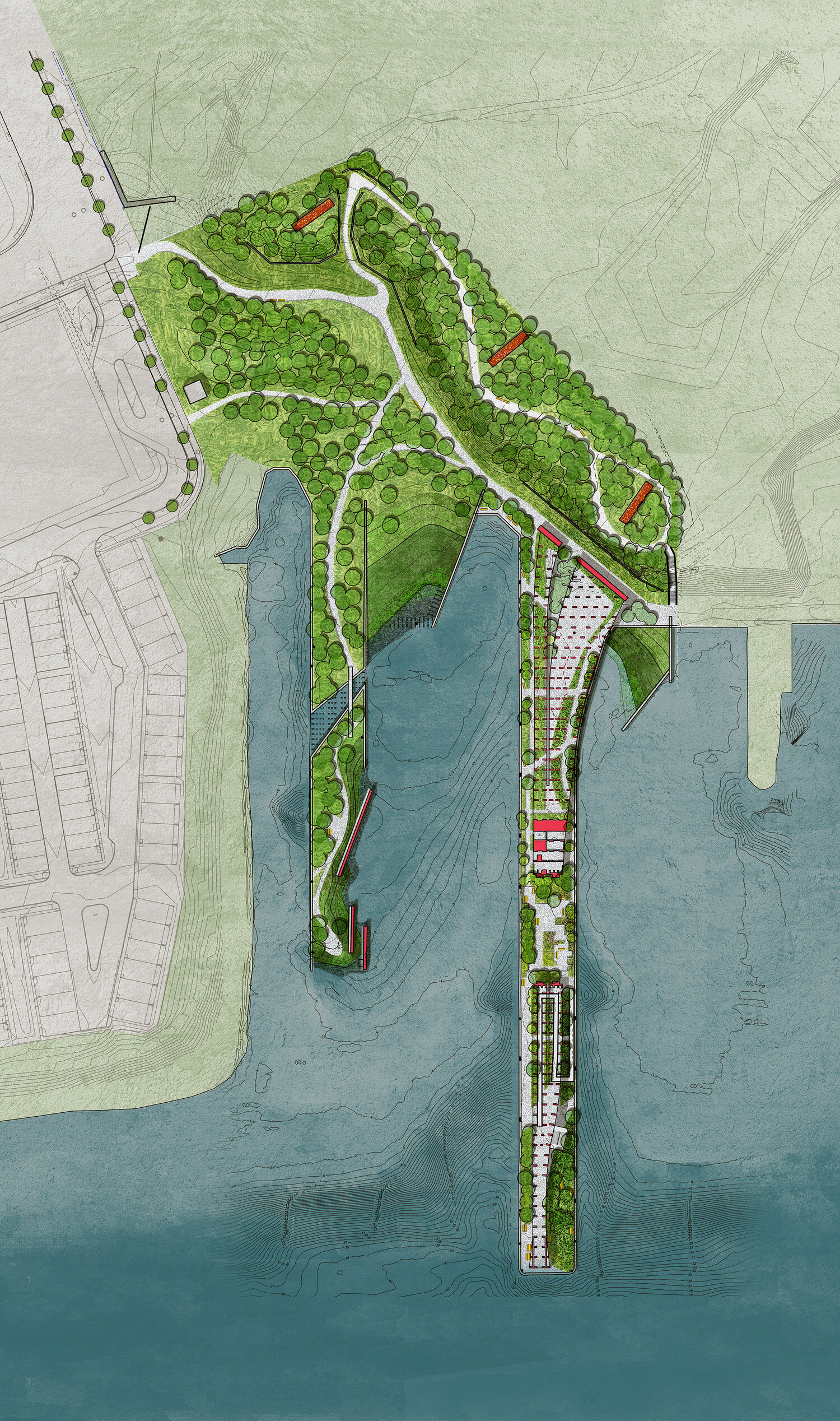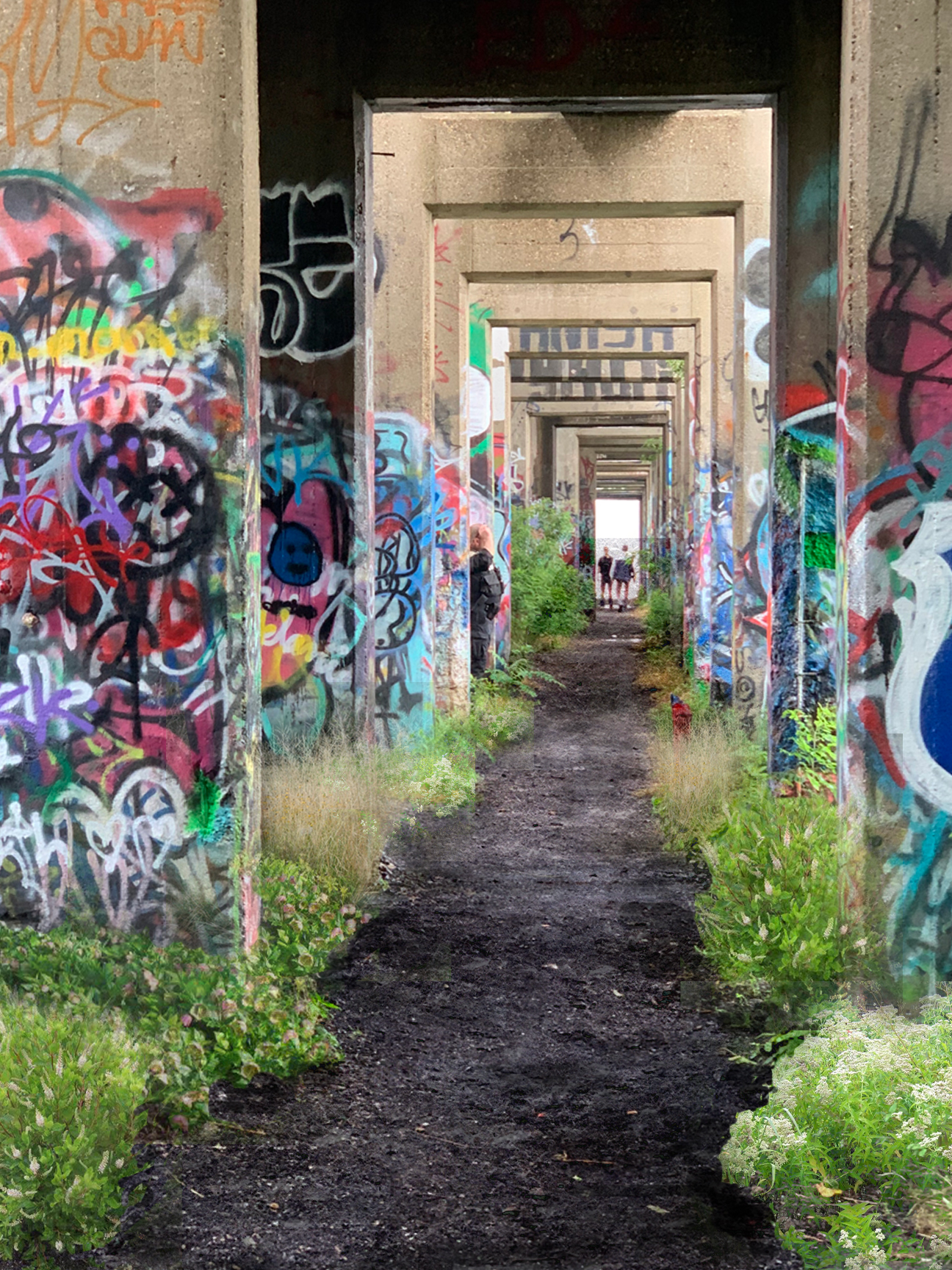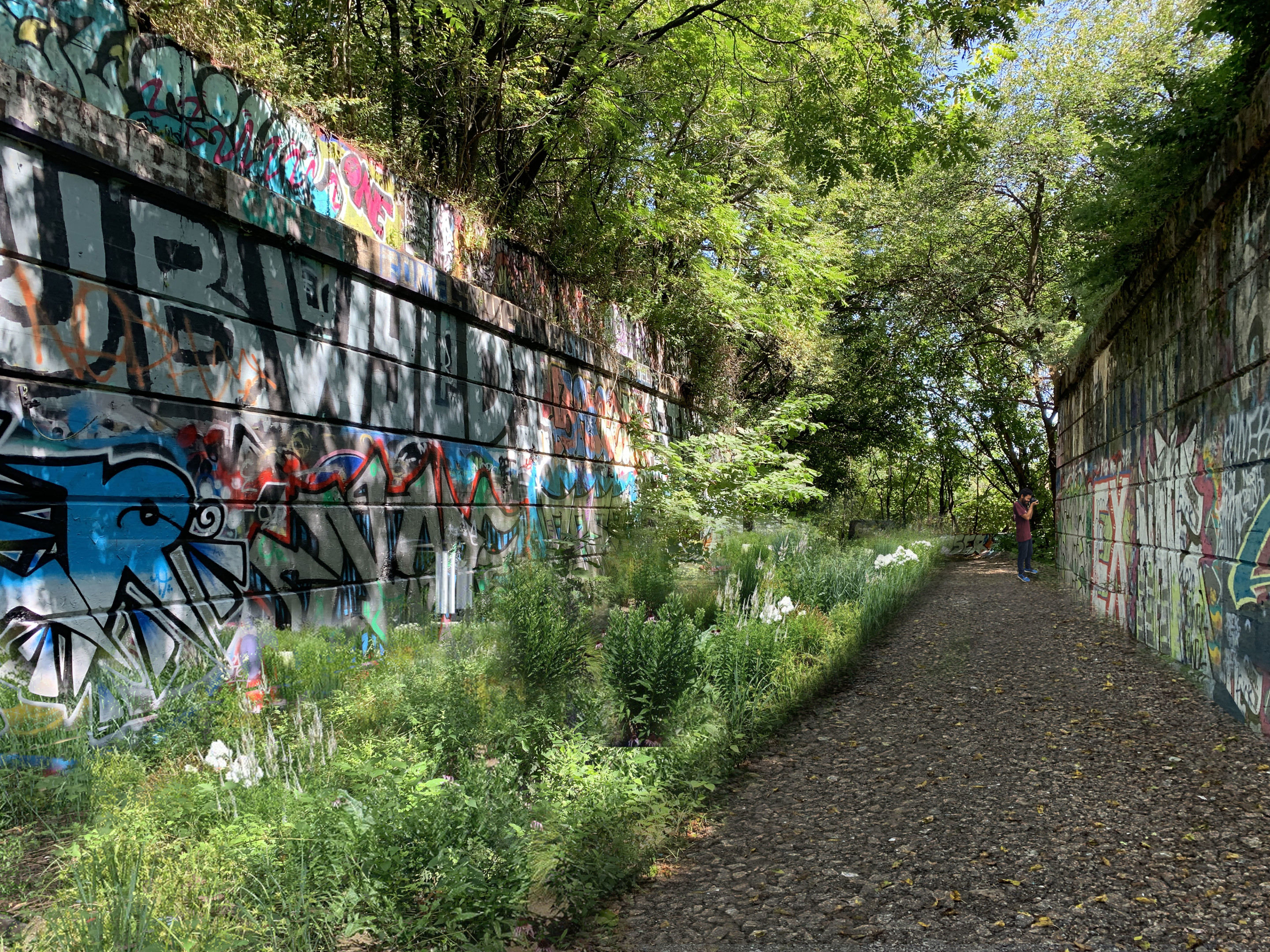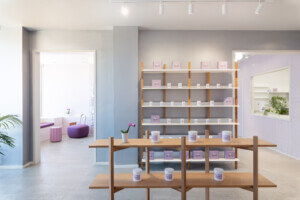Put aside worries about Google Street View’s surveillance capability, and its HD cameras will open up myriad strange and wonderfully immersive views into landscapes both out-of-the-way and under-the-radar. There’s a privacy and an intimacy in clicking through those public, panoptic street scenes, as disembodied visitors form their impressions of a place based on a stranger’s documentation.
The immersive format works especially well at sites like Philadelphia’s Graffiti Pier, a disused coal bridge on the Delaware River that in recent years has gained notoriety as a mecca for aerosol art. Thanks to Street View user Mark Henninger, who documented the allée, as well as more than 14,000 Instagram tags, I can stroll under the pier’s concrete arches to admire the colorful cartoon characters and writhing arabesques in high-res.
A place like Graffiti Pier is both an open-air gallery and a living monument to changing economics. The site was once part of the giant Port Richmond rail yard, a busy inland exchange where ships were loaded up with Pennsylvania anthracite for distribution along the Eastern Seaboard and on the other side of the Atlantic Ocean. Freight company and current owner Conrail bought the industrial area in the mid-1970s, at the nadir of the state’s coal output, and all but abandoned the southern portion of the waterfront in 1991—a decision that de facto opened the pier to street artists. Now, thanks to a nonprofit that stewards the city’s waterfront, and a coalition between the New York-based landscape firm Studio Zewde and the Philly taggers who have made it into a destination, Graffiti Pier is slated for yet another transformation.
The proposal from Studio Zewde walks a tightrope: Make the area accessible to a wider public and protect it from climate change, but don’t erase the pier’s offbeat spirit in the process. “The design moves that we’re proposing are really an act of preservation,” explained Studio Zewde principal Sara Zewde. “But in order to keep the space feeling the same way, you have to change it.”
Renderings of the six-acre site depict interventions so minimal as to be indistinguishable from the photos on Google and social media. In one image, a stylish woman in a pinstripe dress and a young boy sit on top of a rail bridge covered in wildflowers (see up top), while in others the yawning coal bridge trellis stretches out toward the river in both directions.

Despite its newfound online exposure, the pier isn’t easy to find—something that Studio Zewde’s plan seeks to address. Currently, visitors arriving at the pier from nearby neighborhoods Port Richmond and Olde Richmond must traverse the barren undercroft of Interstate 95 or the rail yard’s overgrown industrial flatlands. A big goal is to make a more legible entrance to the future park and to improve the paths alongside and beneath the coal bridge for ease of use. Access means little, however, if the pier is underwater, a real likelihood with fiercer storms and higher tides in the coming years. To mitigate potential ruin, Studio Zewde is considering seeding intertidal wetlands both to control flooding and to add a visual barrier between the pier and a massive townhouse development underway in Port Richmond.
Investments like these in Graffiti Pier, said Zewde, were the only way it could survive, essence intact, amid a changing environment and development pressures. “A lot of the new development is sleek, clean, and sterile, and people said they didn’t want an aesthetic that relates to a lot of the new development. And so our approach to designing something gritty, and that feels found, is a challenge to that aesthetic.”

Consensus around the approach, Zewde added, mobilized artists and community groups to get involved in the planning process. The project team—which, apart from Studio Zewde, includes the nonprofit Delaware River Waterfront Corporation (DRWC) and the public space advocacy firm Amber Art and Design—expressly avoided the conventional box-checking approach to community outreach, in which public meetings are a rubber stamp to move projects along the pipeline. DRWC in particular hopes the relationships it has forged with Philadelphians through its decade of greening the waterfront have built goodwill and buy-in for the pier transformation.
“Every project we do is for the city, not just for people who live nearby,” said Karen Thompson, DRWC’s director of planning. “This project really has these three audiences—near neighbors, people interested in art, and people who make art.”
Shortly after winning its contract in September 2019, the team convened an advisory council with an even split among seats for community development corporations and higher-profile artists, who helped provide connections to underground street artists, who are harder to reach. Occasionally these smaller groups met in bars, because some of the street artists—owing to the illicit nature of their work and negative public perceptions of graffiti—prefer a level of anonymity that would be hard to maintain at a larger public event.
Zewde and Thompson both shared some insight into the on-the-ground process: At one of the first public meetings, Thompson said, the team asked artists what they thought was the best thing that could happen at the pier (“How do we keep this a place that feels found?”) and the worst thing that could happen (accelerating gentrification). The G-word came up often, but she noticed it was invoked around the fear of losing a place that feels secret and undiscovered amid new development in the neighborhood.

For Zewde, being on the other side of these exercises is what got her interested in urban planning and landscape architecture in the first place. She grew up in Louisiana and, as a college sophomore, started going to community planning meetings after Hurricane Katrina hit. “I was frustrated by the gap between what I knew the place to be and what the designers were saying,” she recalled. “That was what made me feel like I should learn what they learned and see why there’s this huge gap [in understanding].”
It all ties into a holistic approach toward shaping space. “My research and practice are really held together by a central inquiry, an expanded mode of what landscape architecture can be,” Zewde explained. “It is designing places and building places that make people feel like they belong in this world.”











